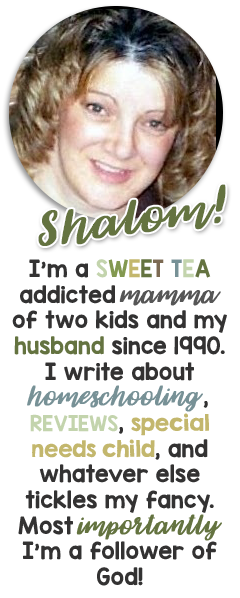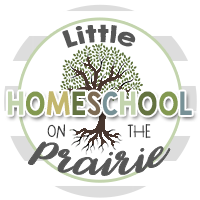06 April 2017
Blogging Through the Alphabet-Letter L
April 06, 2017
Letter L is for leaven.
Leaven in Hebrew is actually called se’or שְׂאֹר but, the leavened product is called chametz חָמֵץ. In other words you wouldn’t eat the leaven as it’s
the ingredient used to make your breads rise. Thus the main difference is that chametz חָמֵץ is food and is edible.
This week as my family is getting ready for Pesach
(Passover). We are cleaning the house up and removing all leaven products from
our house. I love all the symbolism in Passover and how it points to my Savior
Yeshua (Jesus).
In Leviticus 23:1- 2 it “The LORD spoke again to Moses, saying, “Speak to the sons of Israel and say to them, ‘The LORD’S appointed times which you shall proclaim as holy convocations. My appointed times are these”.
Passover follows Chag HaMatzah, or the Feast of Unleavened Bread, when no chametz may be eaten or in your home for a full seven days (Ex. 12:14-20; Num. 28:16-25; Lev. 23:6-8). During the week of Chag HaMatzah we are not to have any leavened products in our homes, or eat any leavened products outside our home.
The
original celebration centered around the Passover lamb, which was sacrificed
and then the lambs blood was put over the doorpost as a sign of faith, so that
the Lord passed over the houses of the Hebrews when the last plague was poured
out on the Egyptians-the killing of all the firstborn. (Exodus 12:13)The New
Testament says that Yeshua (Jesus) is our sacrificial
Lamb. The Passover lamb was to be a male without any defect, "which is the
same description given to Yeshua"
The lamb was roasted and eaten, and none of the lambs legs were to be broken.
We know from scripture that none of Yeshua's
bones were not broken. It was customary during crucifixion to break the leg
bones of the person after a few hours to speed up the death. The only way a
person could breathe when on the tree (cross) was to push up with his legs,
which is said to be very tiring. Breaking of the legs would cause asphyxiation
and a quicker death. The soldier's
broke the two thieves on the cross but, not Yeshua's.
Isn't the scriptures so amazing.
Passover sacrifice- the lamb that was being killed in the temple as the Passover sacrifice for the sins of the people of Israel.
Psalms 118 " Blessed is He that comes in
the name of the Lord" Yeshua entered the city. We know that Yeshua on a
donkey entered the city, his entry fulfilled prophecy. Isn't that exciting that
Yeshua enter Jerusalem on the same
day that the lamb was lead to the temple! The lamb would be tied up for public
viewing so that it would be inspected for any blemishes. Yeshua was questioned and tested
for 4 days in the temple by the Sadducee's, the Pharisees. They wanted to
entrap Him with His own words. They couldn't because He was without blemishes.
(1 Cor. 5:7)
Burial---As part of the festival, the sacrifice the Jews would take some of the grain-the first fruits- of their harvest. It was at this point that Yeshua was buried. Paul talks about Yeshua as the first fruits of those raised from the dead. (1 Cor.)
Burial---As part of the festival, the sacrifice the Jews would take some of the grain-the first fruits- of their harvest. It was at this point that Yeshua was buried. Paul talks about Yeshua as the first fruits of those raised from the dead. (1 Cor.)
Resurrection---Christian symbolism in the Passover occurs early in the Seder. Three pieces of matzahs are put together. The middle matzah is broken, wrapped in a white cloth and hidden, representing the death and burial of Yeshua. The matzah itself is represents Yeshua, since it is striped and pierced. Following the Seder meal, the "buried" matzah is then "resurrected"
During the Passover Seder Yeshua took the unleavened bread(matzah) broke it, and said that it represents His body. Then He took the cup of wine, which would be the 3rd cup in the Seder. the cup of redemption. He said that it was the new covenant in His blood, "poured out for you. (Luke 22:20)
All of this is just touching some aspects of the Passover celebration. I don't know about you but, I see Yeshua in all the Passover symbolism. Its a beautiful story of the Messiah.
#abcblogging
You can see my other post of this series below:
Subscribe to:
Post Comments
(Atom)


Search This Blog
Grab my button!

Followers
Powered by Blogger.
Homeschool Planet
HSP Free Offer Email for REVIEWERS
Popular Posts
-
We are learning about the Viking in our history studies. What better way the enhance the learning by adding a craft to the mix. With my kid...
-
After several weeks of hard work on our Native American Teepee Village Diorama we are finally done. This was a fun project. Everyone is rea...
-
About the Book Boo k: Scent of Sabotage Author: Dana Mentink Genre: Inspirational Romantic Suspense Release Date: December 30, 2025 De...
-
When I was in Israel, one of the most surreal moments was going to the Temple Mount. It’s something I will never forget. We nearly didn’t ge...
-
Disclosure: I received this complimentary product through the Homeschool Review Crew Math seems to be one of the biggest worries among homes...
Labels
20p12.1
4-H
About Me
American History
Ancient History
Autism
Beekeeping
Beekeeping 101
Bible
Blog Hop
Blogging
book
Book reviews
Camera Shots
Classroom
Coding
Curriculum
Disclosure Policy
Egypt
Entomology
Experiments
Family
Feast of Tabernacles
Field Trips
Free Printables
Garden
Geography
Giveaway
Giveaways
Hanukkah
Health
Hebrew
High School
History
homemade
Homemade Bread
Homemaking
homeschool
Homeschool crafts
Homeschooling
Honey Products for Sale
Honey Recipes
Horse Therapy
iPad & Apps
Israel
Just For Fun
Juvenile Arthritis
Kids
Lapbooks
Life Cycle
Life in general
Math
Medieval History
My kid said...
Organizing
Organizing/homeschooling
Our curriculum
Our Week Through the Lenses of a Camera
Passover
Photography
Prayer
Purim
Random Pictures from my Kids
Recipes
Review
Review Policy
Reviews
Rosh Hashanah
Science
Scripture
Sensory Processing Disorder
Shabbat
Shavout
Simchat Torah
Sonlight
Special Needs
Special Needs High School
Special Needs Product Reviews
STEAM
STEM
Stuff
Tish B’Av
tos
TOS Crew Reviews
Tu Bishvat
Viking History
Week in Review
Wordless Wednesday
Workboxes
Yom Ha'atzmaut
Yom Hashoah
Yom Hazikaron
Yom Kippur
























Very informative. Thanks for sharing.
ReplyDeleteI saw that braided bread and thought "I want to learn how to do that". We don't celebrate Passover here, but we do Good Friday and Easter.
ReplyDeleteInteresting post. Thank you for taking the time to write and share. - Lori
ReplyDelete